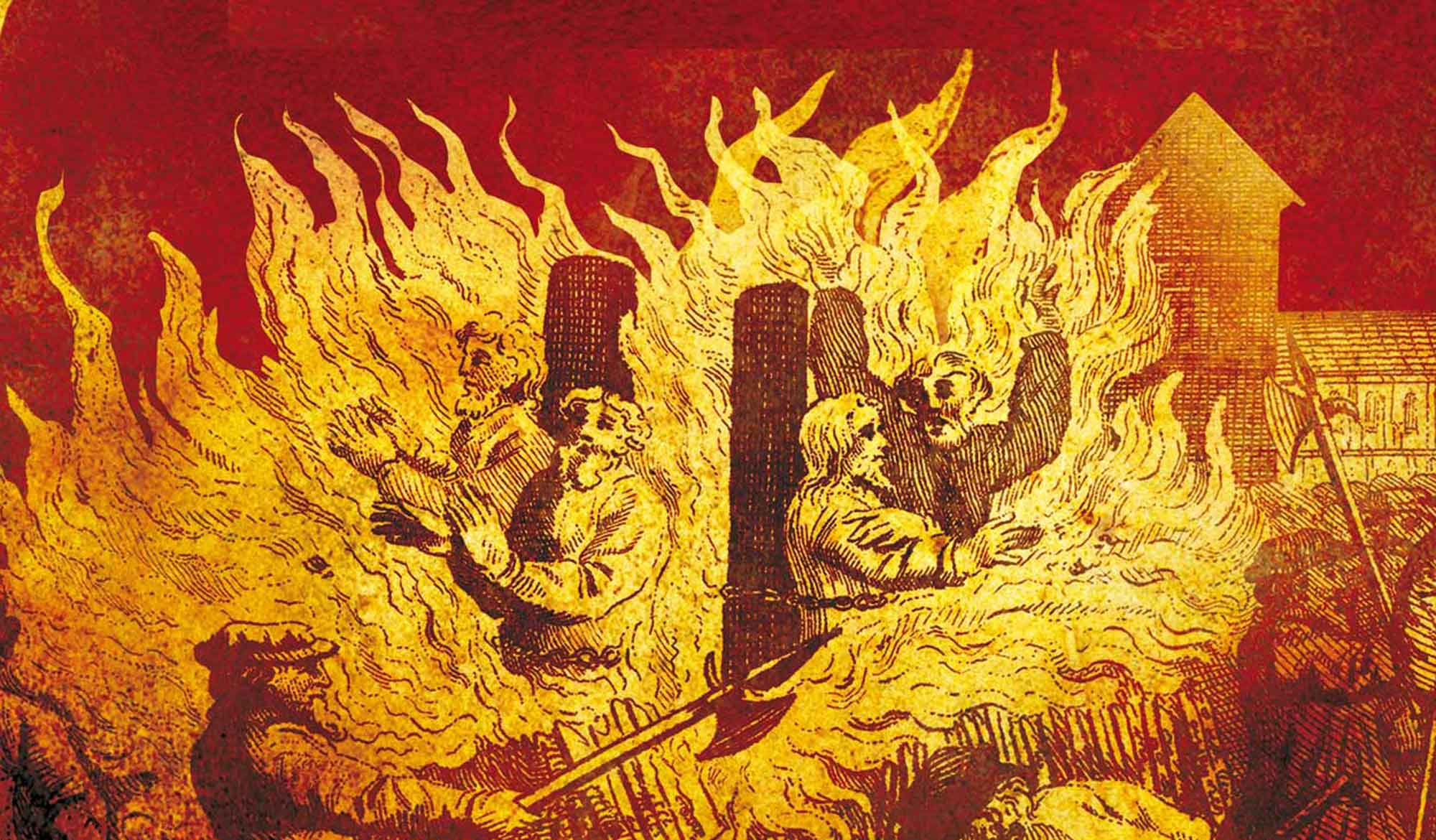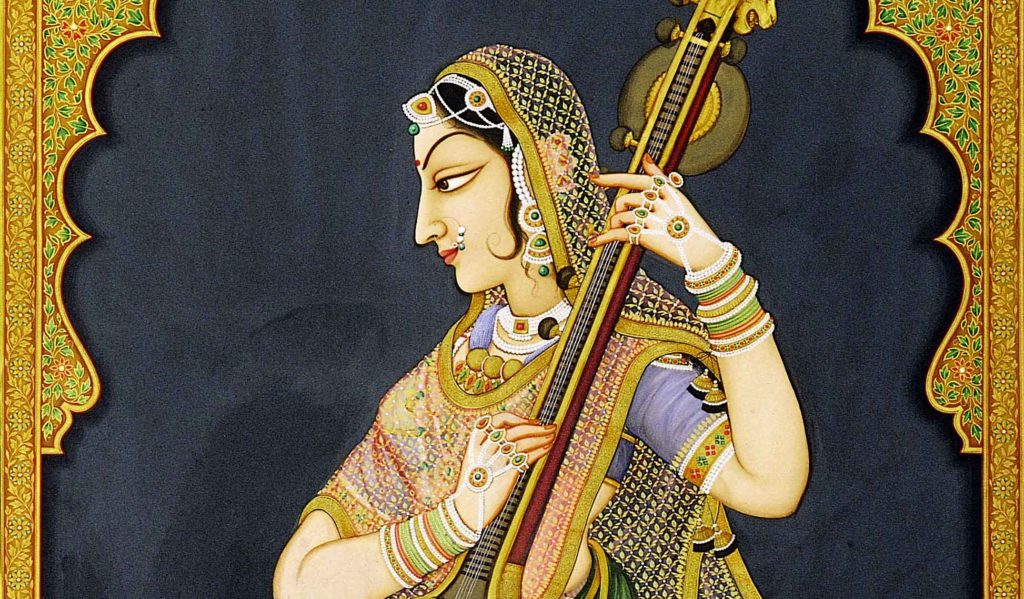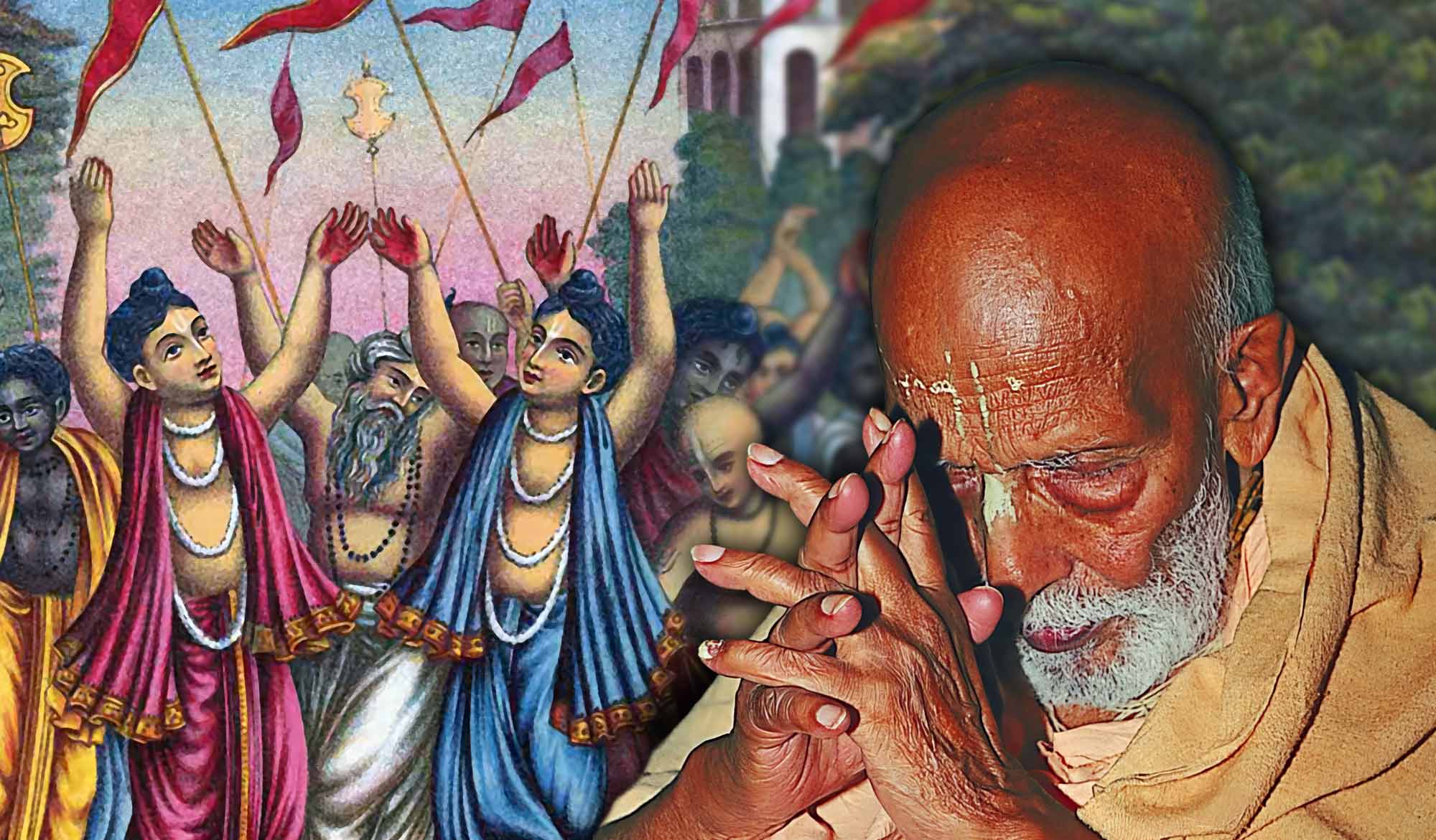Overview
‘Heresy, Inquisition, Jihad, Fatwa and the Hare Kṛṣṇas’ was written by Śrīla Narasiṅgha Mahārāja in July 2010 was a follow-up article to his essay, ‘Śriya Śuka.’ After receiving a barrage of complaints, insults (and a few death threats) from members of a certain Vaiṣṇava mission, Narasiṅgha Mahārāja asks if there is any difference between Christian and Muslim fanatics and the Hare Kṛṣṇas?
What do heresy, the Inquisition, jihad and fatwa have in common with some Hare Kṛṣṇas?
Mentality!
If you have done your homework and watched a few documentaries, then you will know that back in the Middle Ages heresy was no laughing matter. The Inquisition (between 1184 CE and the 1800’s) charged hundreds of thousands of innocent people with heresy and condemned them to death by being burnt at the stake. Similarly, the words ‘jihad’ and ‘fatwa’ conjure up images of Iraq and Afghanistan where innocent people are put to death by being decapitated and thousands of men, women and children suffer great tribulation under the draconian rule of fanatical clerics and their henchmen.
But the Hare Kṛṣṇas — we’re different, aren’t we?
Or are we?
Well, I would say that overall, most Hare Kṛṣṇas are different. But unfortunately a mentality similar to the Inquisition and the jihadists lives on in the minds of some so-called Hare Kṛṣṇas who are more like those suffering from NPD [Narcissistic Personality Disorder] than inspired representatives of Kṛṣṇa. Sadly, this unpleasant truth became evident when leading figures in the Hare Kṛṣṇa Movement conspired and ordered the death of one of their own members in 1986. The victim was an outspoken critic of leaders in the movement. His name was Sulocana – all but forgotten now…‘the one whose name should not be uttered’.
The murder made headline news in Los Angeles in the summer of ‘86 and sent a shock wave around the movement. Leaders, GBCs, gurus and sannyāsīs scrambled to make sure they were not implicated until justice finally found its mark and the hit man and several of those involved in the murder went to prison. Twenty-four years later all are free and back on the streets, chanting on their beads…all except for one – the man who pulled the trigger, Thomas Drescher. He is still doing his morning sādhana behind bars.
If you have read the horrifying book, Monkey on a Stick then you will know that things were very bad in the Hare Kṛṣṇa Movement during that era and that several murders (solved and unsolved) took place at New Vṛndāvana and in other parts of the world during those years — all within the movement. These murders had one thing in common — the victims were outspoken and rebellious and they crossed their leaders.
During the Dark Ages in Europe, if one crossed the Church or voiced any type of dissent it was as good as signing one’s own death warrant. There are similarities between the Church and the Hare Kṛṣṇas, though things are not as severe now as they were then. To criticise leadership in the Hare Kṛṣṇa Movement has always been the shortcut to being ostracised, ridiculed, isolated, even excommunicated — everything just short of being hung, drawn and quartered. You know… “Give the dog a bad name, then shoot him!”
But there is another development in the air and that is to single out those who have a different understanding of the philosophy of Kṛṣṇa consciousness – to condemn them as offenders and demonise them by any means. This has been going on for years. It is not surprising that in many cases, the dissenters that throw off the yoke of ‘Ultimate Authority’ are often found to have the correct philosophy. “God so much loves the little man, the meek, the speaker of truth.”
But that matters little in the halls of religious imperialism and papal bureaucracy where those suffering from narcissistic behavioural patterns may even pass as the infallible ācārya.
But hey! What’s new? In the time of Srila Bhaktisiddhānta, his life was threatened several times due to his outspoken presentation of the truth. He spoke out boldly against those who misrepresented the philosophy of Kṛṣṇa consciousness even if it put his life in danger. And today, threats of violence and even murders take place amongst members of the same mission/sampradāya! I think I know this as well as anyone. I have always been an outspoken preacher and that tendency has brought me threats of death and violence on more than one occasion.
The Hare Kṛṣṇa Movement (with all its different missions and branches) is very big and has many, many members around the world. But it is miserably weak and undernourished when it comes to proper conception/ proper spiritual philosophy.
My last Kṛṣṇa Talk article, Śriya Śuka made me quite aware of this once again. After the article was released, it wasn’t long before I received a flurry of emails denouncing me as a mahā–aparādhī (great offender), as ‘envious’ and many things worse than that. In these emails I was thoroughly condemned and warned to “prepare to be devastated”! What ‘devastated’ was supposed to mean, I don’t know for sure. I assume it meant that soon, Lord Kṛṣṇa would smite me down for my evil deed of using my brain and researching śāstra – and all because my article disagreed with the view of a popular guru of our times who claims that Śukadeva Gosvāmī was the pet parrot of Śrīmatī Rādhārāṇī.
I had to pinch myself. Was this for real? Was I being condemned, as in a heresy trial four hundred years ago? Was I next in line to be burnt at the stake? My accusers would have happily settled to see my neck in a noose, but fortunately for me emails can’t kill.
Disagree with the Church in medieval times and you were a dead man. Disagree with a Muslim cleric and a fatwa for your assassination may be issued. Disagree with a Hare Kṛṣṇa guru who has the most disciples and you find yourself in a world of excrement – criticised, ostracised, ridiculed, isolated, condemned, excommunicated or even dead, if you don’t watch your back.
I know for a fact that mine is no isolated incident. Many devotees have been, and continue to be, dealt with in the same way if they dare think for themselves – what to speak of disagree with the ‘All-knowing, omniscient guru’. This however is not a good sign for a spiritual movement.
Unless the Hare Kṛṣṇas can learn to discuss philosophical points of view without fearing that their guru is under attack, or that they have to sacrifice life and limb to protect the guru from being questioned — then you can expect the worse for the future of the Hare Kṛṣṇa Movement.
If that is the case, then the Hare Kṛṣṇa Movement will surely deteriorate (as other movements before it) into becoming nothing more than a mundane cult of dogmatic principles with an elite clergy vying for wealth, fame and followers, but devoid of any true spiritual knowledge or inner experience of Kṛṣṇa.
The solution? Abandon the thinking that your guru is the only guru and that anyone who differs from you or your guru is automatically a mahā-aparādhī or a demon. This is the mentality that consumed Iskcon in the 1980’s and caused their demise. This same mentality is now present in some groups of Hare Kṛṣṇas that originally left Iskcon to make a fresh start, but who have ended up creating a community of Hare Kṛṣṇas with the same woes! A step in the right direction at this point would be for Hare Kṛṣṇas to start learning how to think and to question and not to be afraid of the truth. Kṛṣṇa lives in the truth, so why settle for anything less?
Prabhupāda Śrīla Sarasvatī Ṭhākura’s Visit to Ayodhyā
With the forthcoming observance of Śrī Rāma Navamī, we present 'Prabhupāda Śrīla Sarasvatī Ṭhākura’s Visit to Ayodhyā' written by Śrīla Bhaktisiddhānta Sarasvatī Ṭhākura Prabhupāda from The Gaudīyā magazine, Vol 3. Issue 21/ In December 1924, after visiting Benares and Prāyāga, Sarasvatī Ṭhākura visited the birth-site of Śrī Rāmācandra in Ayodhyā.
Śaraṇāgati – The Only Path to Auspiciousness
In this article, 'Śaraṇāgati - The Only Path to Auspiciousness', Dhīra Lalitā Dāsī analyses the process of śaraṇāgati (surrender) beginning with śraddhā (faith). She also discusses the role of śāstra and the Vaiṣṇava in connection with surrender.
Ātma Samīkṣā – The Value of Introspection
In this article, "Ātma Samīkṣā – The Value of Introspection" Kalki Dāsa highlights the importance of introspection in the life of a devotee and especially in relation to the worldly environment that surrounds us. He also explains how transcendental sound influences our capacity to introspect.
Svasti No Gaura-vidhur Dadhātu (May the Moon-like Gaura Bestow Auspiciousness)
This Bengali poem, ‘Svasti No Gaura-vidhur Dadhātu,’ (May the Moon-like Gaura Bestow Auspiciousness) written by Śrīla Bhakti Pramoda Purī Gosvāmī, was first published in 1965 in Caitanya Vāṇī magazine, Vol.5, Issue 1. In this composition, Śrīla Purī Mahārāja gives advice to the fallen jīvas to sincerely accept Mahāprabhu's gift of the Holy Name. This poem was translated into English by Sanātana Dāsa and Parameśvarī Devī Dāsī.
Prabhupāda Śrīla Sarasvatī Ṭhākura’s Visit to Ayodhyā
With the forthcoming observance of Śrī Rāma Navamī, we present 'Prabhupāda Śrīla Sarasvatī Ṭhākura’s Visit to Ayodhyā' written by Śrīla Bhaktisiddhānta Sarasvatī Ṭhākura Prabhupāda from The Gaudīyā magazine, Vol 3. Issue 21/ In December 1924, after visiting Benares and Prāyāga, Sarasvatī Ṭhākura visited the birth-site of Śrī Rāmācandra in Ayodhyā.
Śaraṇāgati – The Only Path to Auspiciousness
In this article, 'Śaraṇāgati - The Only Path to Auspiciousness', Dhīra Lalitā Dāsī analyses the process of śaraṇāgati (surrender) beginning with śraddhā (faith). She also discusses the role of śāstra and the Vaiṣṇava in connection with surrender.
Ātma Samīkṣā – The Value of Introspection
In this article, "Ātma Samīkṣā – The Value of Introspection" Kalki Dāsa highlights the importance of introspection in the life of a devotee and especially in relation to the worldly environment that surrounds us. He also explains how transcendental sound influences our capacity to introspect.
Svasti No Gaura-vidhur Dadhātu (May the Moon-like Gaura Bestow Auspiciousness)
This Bengali poem, ‘Svasti No Gaura-vidhur Dadhātu,’ (May the Moon-like Gaura Bestow Auspiciousness) written by Śrīla Bhakti Pramoda Purī Gosvāmī, was first published in 1965 in Caitanya Vāṇī magazine, Vol.5, Issue 1. In this composition, Śrīla Purī Mahārāja gives advice to the fallen jīvas to sincerely accept Mahāprabhu's gift of the Holy Name. This poem was translated into English by Sanātana Dāsa and Parameśvarī Devī Dāsī.








